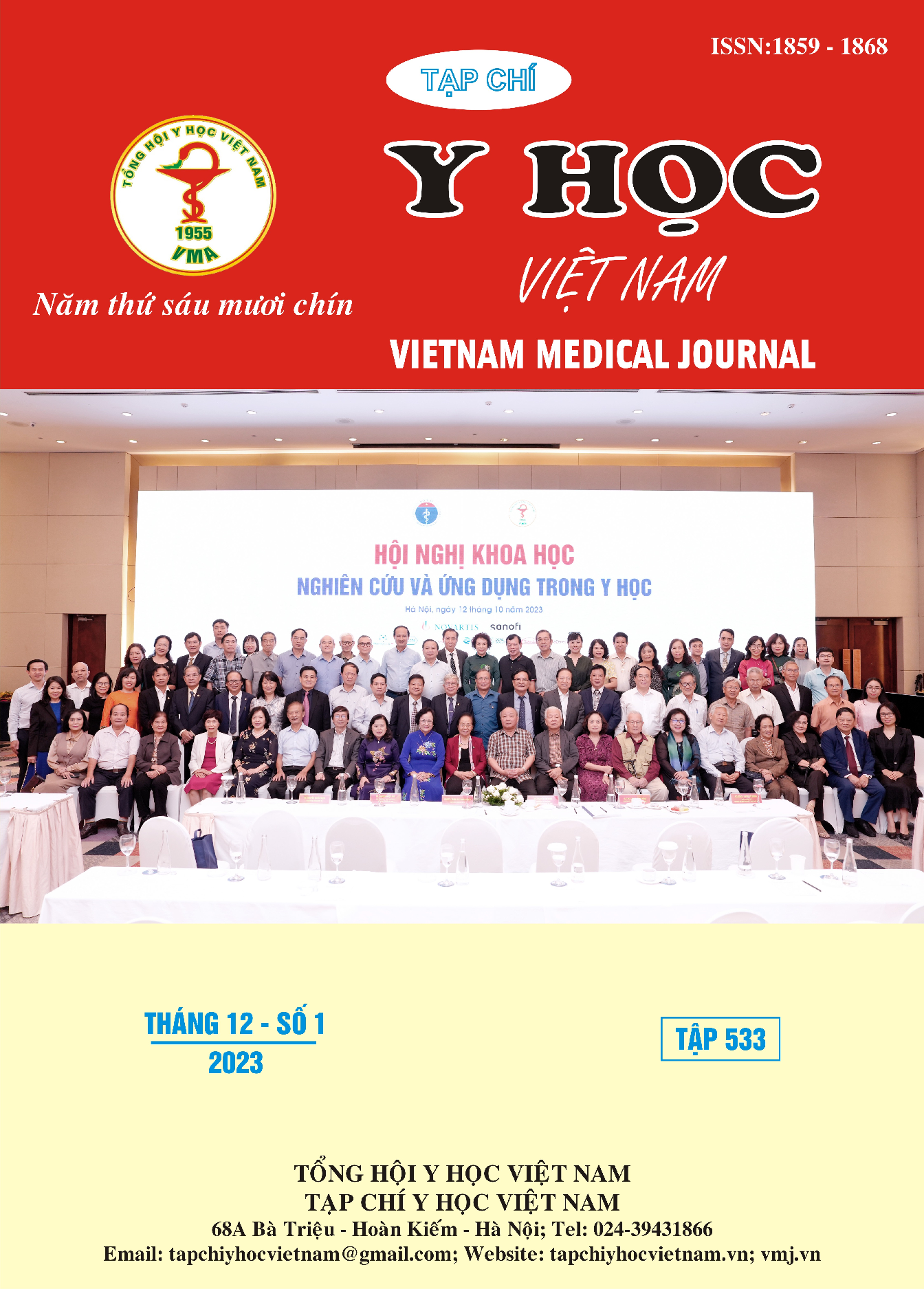GLYCEMIC CONTROL STATUS IN OVERWEIGHT AND OBESE POSTMENOPAUSAL TYPE 2 DIABETIC PATIENTS
Main Article Content
Abstract
Objectives: To investigate the status of glycemic control in overweight and obese postmenopausal type 2 diabetic patients. Subjects and methods: A prospective cross-sectional descriptive study on 112 overweight and obese postmenopausal type 2 diabetic patients who visited the Outpatient Department, Bach Mai Hospital from January 2023 to August 2023. Results: The average age was 68.1 ± 8.3 years old; the average age of menopause was 50.8 ± 2.8 years; > 70% of patients have experienced menopause for more than 10 years. The rate of having type 2 diabetes for over 10 years is the highest at 58.0%. The mean BMI was 25.7 ± 2.4 kg/m2. The average waist circumference is 90.9 ± 6.9 with a waist circumference ≥ 80 cm accounting for 97.3%. The rate of HbA1c < 7% was 30.4%, the mean HbA1c was 8.2 ± 1.6%. The average fasting blood glucose was 8.5 ± 2.7 mmol/L. There was a relationship between the rate of achieving HbA1c < 7% and the number of menopausal symptoms. Conclusions: Glycemic control status is still poor. Overweight and obesity have a significant role in attaining disease control goals. Treatment must be personalized, while emphasizing the role of nutrition and exercise in achieving weight-control objectives.
Article Details
Keywords
diabetes, menopause, overweight, obesity.
References
2. Nguyễn Thy Khuê (2014). Tỉ lệ bệnh nhân đái tháo đường týp 2 đạt mục tiêu HbA1c tại một phòng khám chuyên khoa đái tháo đường ở TP Hồ Chí Minh. Tạp chí Nội tiết- Đái tháo đường Việt Nam. 2014;(13):35-40.
3. Hồ Thị Kim Thanh (2010). Tình trạng kháng insulin ở bệnh nhân đái tháo đường typ 2 có hội chứng chuyển hóa từ 60 tuổi trở lên. Tạp chí nghiên cứu Y học,70,(5):32-37.
4. UK Prospective Diabetes Study (UKPDS) Group (1998). Effect of intensive blood-glucose control with metformin on complications in overweight patients with type 2 diabetes (UKPDS 34). Lancet,352:854–865.
5. Nguyen KT, Diep BTT, Nguyen VDK, Van Lam H, Tran KQ, Tran NQ (2020). A cross-sectional study to evaluate diabetes management, control and complications in 1631 patients with type 2 diabetes mellitus in Vietnam (DiabCare Asia). Int J Diabetes Dev Ctries;40(1):70-79.
6. Pradhan AD, Manson JE, Hendrix SL, et al (2006). Cross-sectional correlates of fasting hyperinsulinaemia in post-menopausal women of different ethnic origin. Diabet Med J Br Diabet Assoc;23(1):77-85.
7. Boye KS (2021). The Association Between Body Mass Index and Glycemic Control in Patients with Type 2 Diabetes Across Eight Countries: A Literature Review. Curr Res Diabetes Obes J;15(1).
8. Ismail-Beigi F, Craven T, Banerji MA, et al.; ACCORD trial group (2010). Effect of intensive treatment of hyperglycaemia on microvascular outcomes in type 2 diabetes: an analysis of the ACCORD randomised trial. Lancet;376:419–430.


